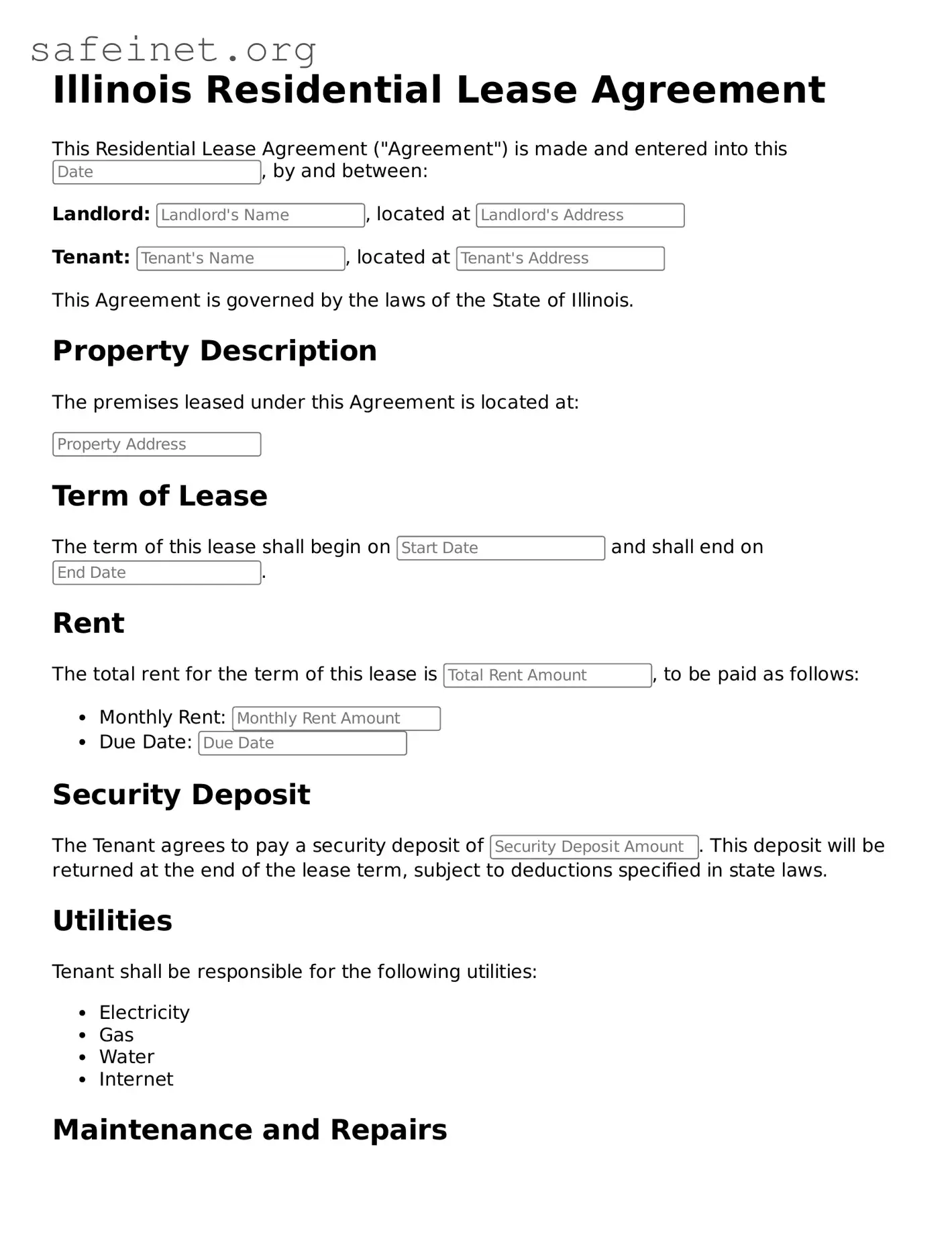What is an Illinois Residential Lease Agreement?
The Illinois Residential Lease Agreement is a legal contract between a landlord and a tenant. It outlines the terms and conditions under which a tenant can rent a residential property. This document covers aspects like rent amount, lease duration, and responsibilities of both parties.
What should be included in the agreement?
Key elements typically included are the names of the parties involved, property address, lease term, rent amount, payment due dates, and security deposit details. It may also include rules about pets, maintenance responsibilities, and termination conditions.
How long is a typical lease agreement?
A typical lease agreement in Illinois is often for one year. However, it can be shorter or longer depending on the arrangement made between the landlord and tenant. Month-to-month leases are also common.
Can I make changes to the lease agreement?
Yes, either party can propose changes to the lease, but any amendments must be agreed upon by both the landlord and tenant. It's best to document any changes in writing and have both parties sign off on those changes.
What happens if I need to break the lease early?
If you need to break the lease before the end date, it’s important to check the agreement for any early termination clauses. You may be required to pay a penalty or forfeit your security deposit. Communication with your landlord is crucial.
Is there a security deposit required?
Yes, it is common for landlords to require a security deposit. In Illinois, the deposit is typically one to two months' rent. This deposit protects the landlord against damages or unpaid rent. Make sure to clarify how and when it will be returned at the end of the lease.
What rights do tenants have under Illinois law?
Tenants in Illinois have several rights, including the right to a safe and habitable living environment, privacy, and protection against unlawful eviction. The law also protects tenants from discrimination and ensures they can return their security deposit under specific conditions.
Are there any restrictions on lease terms?
Yes, certain restrictions do exist. For example, rent control laws may apply in some areas, and leases cannot include illegal clauses, such as waiving the tenant’s rights. It’s essential to ensure the lease complies with state and local laws.
How can disputes be resolved?
If disputes arise, both parties should refer back to the lease for guidance. Mediation or negotiation is often an effective first step. If that doesn't work, you might consider small claims court, depending on the amount in dispute and the nature of the issues.
Where can I get a copy of an Illinois Residential Lease Agreement?
You can find templates online, from real estate offices, or through local housing authorities. It’s advisable to use a legally vetted form specific to Illinois to ensure it meets all legal requirements.
